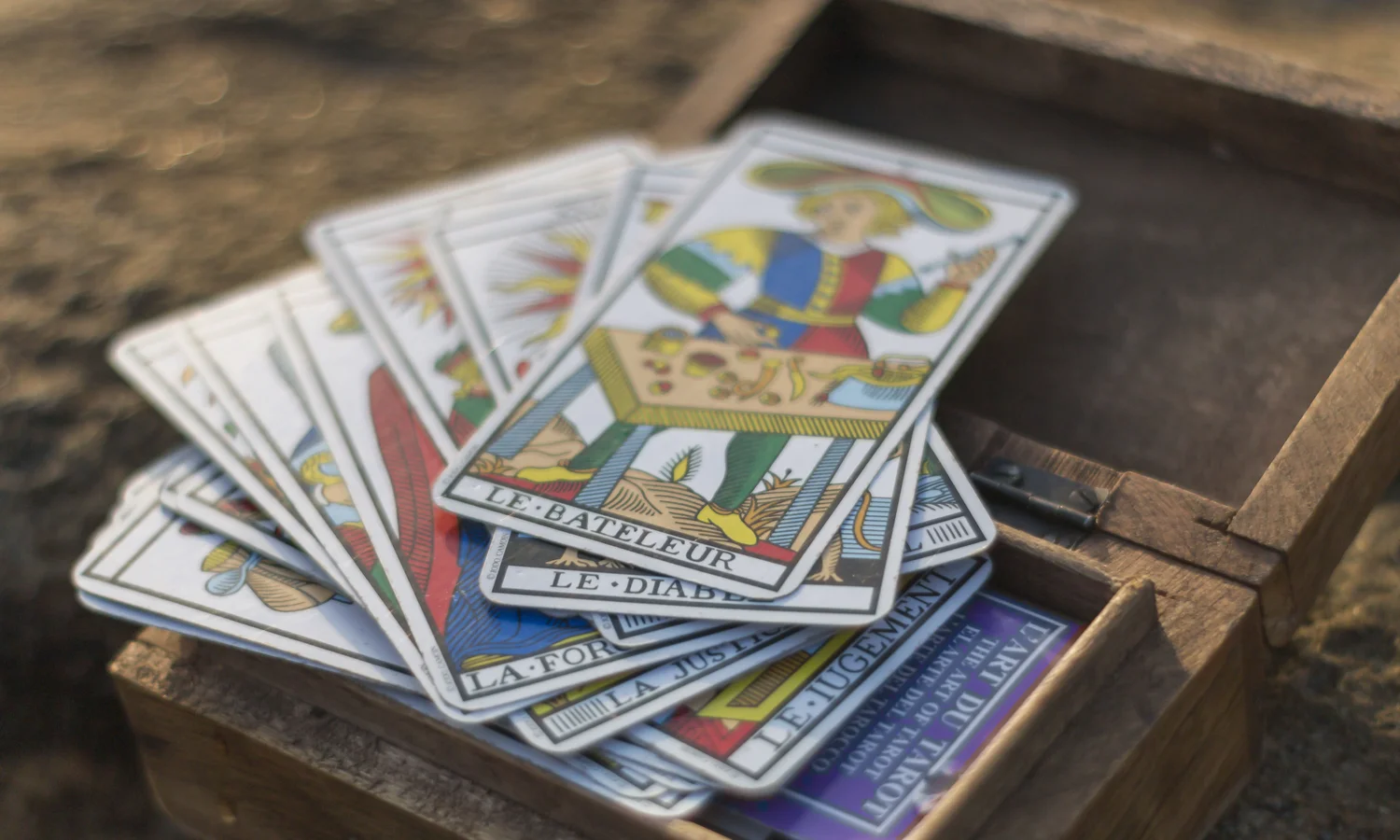When considering the role of card games in human history, we traditionally think of multiplayer games — poker, blackjack, bridge — while overlooking the influence of single-player games like Solitaire. Yet, the longevity of this game throughout the ages unveils the secret of its enduring popularity. Who has played Solitaire throughout its existence, and why?

What is the earliest origin of Solitaire as we know it today? Playing cards were originally invented around the 9th century in China during the Tang dynasty. However, Solitaire card games, or patience as they were first called, were not mentioned in any written sources until 1765. Interestingly, patience games began appearing in literature around the same time as the codification of cartomantic layouts.
Cartomancy, the art of divination using a deck of cards, had been performed with tarot decks in Europe since the mid-15th century. These decks were also used for games. It is believed that the earliest patience games were linked to cartomancy and that winning a game of Solitaire was thought to reveal something about the player’s future.
Most of these early mentions of patience card games come from German sources. By the early 19th century, the games had gained popularity in France. Some say Napoleon himself famously played patience during his exile on St. Helena. Indeed, the modern popularity of Solitaire can be attributed to early French enthusiasm. By the end of the century, the game had spread to Britain and the United States, solidifying its place in gaming history.
The first English-language book on patience games was The Illustrated Games of Patience, published in 1870 by Lady Adelaide Cadogan. However, she references an earlier book titled Patience by Perseverance, apparently published in 1860, though no surviving copies exist. American rulebooks appeared in 1869, with Dick’s Games of Patience (1883) becoming one of the most enduring.
These early rulebooks featured many variations of Solitaire. Klondike, the classic modern form, was included but often referred to as Canfield. Early sources frequently used definitive titles such as The Clock or The House of the Hill. The games were categorized into three types, just as they are today: sequence-building games like Klondike, pairing games, and totaling games.
Throughout the 20th century, Solitaire’s popularity surged, becoming a global staple. Its modern revival is largely thanks to its inclusion in Windows operating systems in the 1990s, which introduced the game to millions worldwide.
The earliest playing cards were a luxury, being hand-painted and requiring significant time and skill to create. However, with the invention of the printing press, playing cards became more accessible. By the 18th and 19th centuries, industrial mass production made them affordable to most.
By the time Solitaire games emerged, playing cards were widely available. Contrary to the assumption that cards and rulebooks were exclusive to the elite, social clubs often kept decks on hand, allowing anyone to learn and enjoy Solitaire — a tradition that continues today. While Solitaire was sometimes associated with wealthier individuals who had more leisure time, it was never entirely exclusive to the rich.
Despite being a solo game, Solitaire has long served as a surprising social activity. Friends would gather over tea, share tips, exchange strategies, and chat while playing, turning it into a casual group pastime. This made Solitaire a socially acceptable alternative to traditional multiplayer games.
Playing Solitaire often reflected the free time and resources of those who owned cards and had access to learning the rules. Yet, its appeal transcended class boundaries, making it a game for everyone, not just the wealthy.
From its intriguing beginnings tied to tarot cards to its rise as a beloved pastime, Solitaire has proven to be far more than a simple card game. It serves as a bridge across cultures, a reflection of societal shifts, and a timeless companion. Whether played for divination, leisure, or connection, Solitaire continues to captivate generations, blending mystery, strategy, and history into one enduring classic. Try it right now!